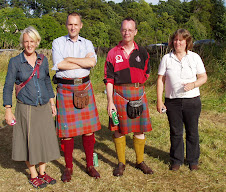I was working from the inside – the facing makes things awkward. I kept looking at the outside to see how the seam looked – it looked fine – but only when I was completely finished and had embarked on hemming the facing down, did I notice that the mock seam on the sleeve was slightly askew, not pointing straight down as it must do.
So I unpicked perhaps a third of my sewing – putting further strain on those poor sliced stitches? – and pinned the sleeve properly in place. I found myself in a recognisable state of frustration, impatience, and tiredness – just the mood in which an ill-judged tug turns misfortune into disaster.
 It looks from the picture as if my seam is swallowing the patterning at the top of the sleeve. Is there a better way to do it? Perhaps just as well I stopped when I did.
It looks from the picture as if my seam is swallowing the patterning at the top of the sleeve. Is there a better way to do it? Perhaps just as well I stopped when I did.
For I retreated at that point to the cheerful and calming sock, and have reached the heel flap. I’ve even chosen the next pair of socks, and put the yarn among the things to take to Glasgow today. Nothing would be worse than running out. I should be able to finish the present pair and include them in the package when the Grandson Sweater goes to London, as they are meant for the Grandson’s mother.
(Rachel is part of a team making a long-term study of the development of twins. Her boss the Professor should be fascinated by these socks.)
I don’t know whether Kitchener’ing is allowed, for the shoulder. Will it be firm enough? I could have done a three-needle bind-off but I thought that that pleasant ridge was a design element too far in this case. Finullgarn is firm and robust; I’m reasonably confident. It looks very nice.
Theresa has most kindly sent me the stitch pattern for her beautiful wavy-line sweater. (Scroll down a couple of entries to see a series of pictures of it.) We both hesitate over this, but I’m pretty sure – from my days as a KnitList “mom” when we seemed to discuss nothing but copyright law and knitting-in-airplanes – that you can’t copyright a stitch pattern. The detailed instructions for turning it into that beautiful jacket, would be another matter entirely. Those she rightly didn't send.
I can’t wait to start swatching.
Non-knit
So, we’re off to Glasgow. Back here Sunday, insh’Allah. Perthshire is covered in deep snow, and thousands are without electricity, so perhaps it’s just as well we’re not going there today as had once been adumbrated.




You are so brave to even contemplate these manouvres!
ReplyDeleteIt looks as though the seam is in the right place on the sleeve pattern, so, sewing down the facing may well help that bit of the sleeve lie flat as it goes into the body, and certainly steaming and patting will do some good. I would be inclined to steam and pat things flat before sewing the facing - it will help ensure you can get the stitching in the right place.
ReplyDeleteCongratulations on placing the first sleeve!
ReplyDeleteThe sweater looks terrific.
Lisa in Toronto
Hi Jean,
ReplyDeleteThe sleeve looks fine. I usually insert my sleeves, even when steeked and with a facing, from the right side, but that's just me. I fold the body sts back where the steek begins so that the first body row shows. There is a bar in between the rows along the edge. I basically do a combination of Kitchener, or grafting, or duplicate st; I don't know what to call it. Using only one color and staying on the top of the work, as in grafting, I go back and forth between one st of the last row of the sleeve (before the facing), and the bar at the edge of the body. The finished seam looks as if the sleeve had been picked up from the body and knit downwards.
It's important that there is a whole stitch at the edge of the body, and that the duplicate/graft row lines up with the previous knit row of the sleeve.
It's also easy to line up the sleeve, because you know exactly how many sts you have and how many rows on the body, so you do the math ahead of time and can plan to skip every fourth bar, for example.
Maybe you can try this sometime on another project.
Anyway, greetings from rainy Egypt.
The sewing in looks great from here!
ReplyDeleteThe sleeve looks great and the shoulder line is absolutely beautiful. Way to go.
ReplyDeleteRon
Great work! Woo-hoo!
ReplyDeleteThat wavy sweater is reminding me of something, maybe a Kaffe shoot? I am **not** implying any stealing of designs or anything of a sort. And I'm behind in reading so perhaps this has all been covered already.
It's lovely.
The Grandson Sweater is very handsome. I think you were wise to put it aside until you are better rested.
ReplyDeleteI feel comfortable about sending you the stitch pattern instructions; as you said I don't think anyone can hold a copyright to short rows.
Such beautiful work, Jean! I admire your careful and contemplative approach.
ReplyDeleteThat is a magnificent shoulder seam. Lovely work.
ReplyDeleteWhenever I wind up picking out a seam, I remind myself of the time spent vs. how long the seam will remain that way. (A half hour spent, on a seam that will be that way FOREVER.) After that, it seems less irritating.
Can't wait to see the whole thing, finished. It'll be great.
oh it looks beautiful!
ReplyDeleteso exciting!
Just wondering - is the Grandson Sweater essentially equivalent to the old Spotted Frock? (as described in The Old Hand-Knitters of the Dales)
ReplyDeleteYour sleeve looks just beautiful. Having made a few Norwegian sweaters myself, my advice would be to set the sleeve from the outside -- I know the facing makes it confusing, but I feel like I have more control that way over how the right-side designs mesh. Using coil-less safety pins, I pin the sleeve at 12 o'clock and 6 o'clock, then 3 o'clock and 9 o'clock, then whatever o'clocks feel comfortable between. Then I use what I think is called mattress stitch to sew the sleeve to the body. Afterwards I stitch the facing to the wrong side as invisibly as possible, thus containing the cut edges.
ReplyDeleteI'm a slower knitter than you -- my own current Norwegian project might be ready for its sleeve-cutting ceremony next month. You do lovely work!
--Rebecca in Minnesota (friend of Gerri's)
P.S. I'm told the 3-needle bind-off stabilizes the shoulder seam so it doesn't stretch sideways, but Kitchener stitch is strong enough to hold it all together if you don't mind stretchiness. Kitchener is just a (hand-sewn) knit stitch, like the entire rest of the sweater. If you do the 3-needle bind-off from the inside, it shows less.
ReplyDelete